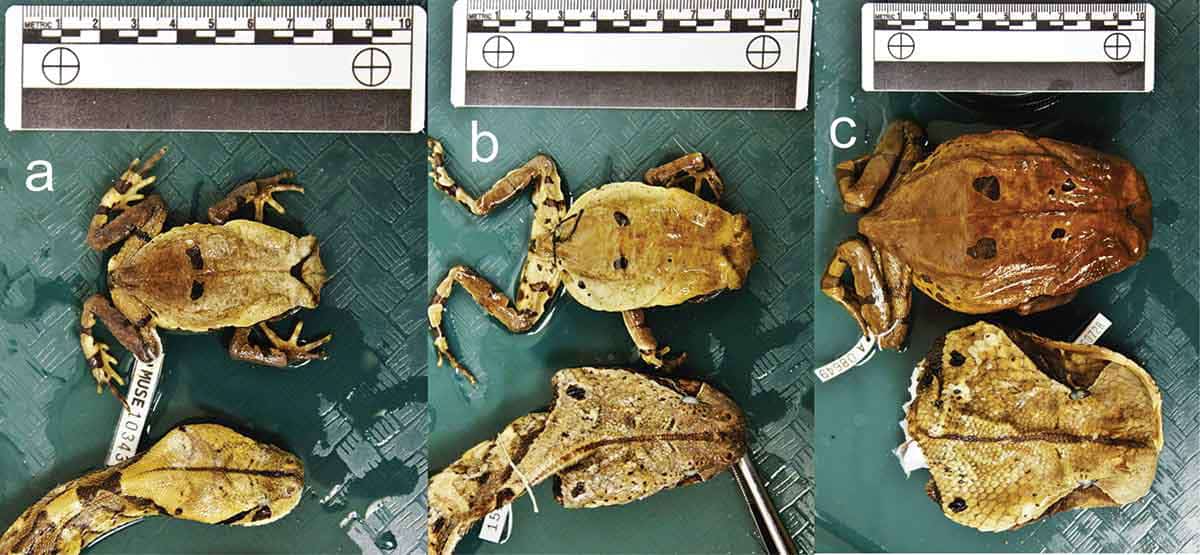The amphibian is known to live in 11 locations that are also home to the venomous snake, and the coloration and patterns they share are uncanny.
The Congolese giant toad (Sclerophrys channingi) lives in the same geographic location as the Gaboon viper (Bitis gabonica) and practices a form of mimicry called Batesian mimicry in which the toad, a non-toxic animal, resembles the venomous gaboon viper, apparently in an effort to avoid predation.
Researchers have published a paper that compares the color pattern, morphology, geographic distribution and behavior, and believes the amphibian, which is endemic to the Democratic Republic of Congo, mimics the Gaboon Viper, which is found throughout the Congo and other areas of Africa.
“This is the first example in the world – that we are aware of – of a frog attempting to mimic a venomous snake,” Eli Greenbaum, a researcher at the University of Texas at El Paso told New Scientist. “It’s rare for frogs to be involved in a mimicry complex in general.”
Greenbaum was conducting a lecture in genetics back in 2017 when student, Theresa Edmondston, who kept venomous snakes, noticed that a photo of a Congolese giant toad Greenbaum showed to the class looked very similar to a gaboon viper, one of her favorite venomous snakes. She noted that the head of the snake was eerily similar in coloration to the back of the toad, mimicking it. Edmondston started to research the two herps, and Greenbaum joined her, comparing and measuring the specimens.
“It became clear slowly over time that, yes, there is some very intriguing similarity here,” Greenbaum said. According to Greenbaum, Chifundera Kusamba of the Natural Sciences Research Centre in Lwiro, Democratic Republic of the Congo, had the missing piece of the puzzle, and indeed it was intriguing.
“He’s got a lot more experience coming across these things in the wild than I have,” Greenbaum told New Scientist. “He happened to mention, as sort of an offhand comment, that when you come across these things in the wild, they let out a little hiss that sounds like air slowly being released from a balloon.” Just like that of a pissed off Gaboon viper. More research determined that the toads lived alongside the vipers, furthering the notion that these amphibians were indeed mimicking the venomous snakes. “There are 11 places where they definitely occur in the same place,” Greenbaum said.
The complete research paper, A remarkable example of suspected Batesian mimicry of Gaboon Vipers (Reptilia: Viperidae: Bitis gabonica) by Congolese Giant Toads (Amphibia: Bufonidae: Sclerophrys channingi) can be read on the Journal of Natural History website here.


